Newsletter
Eat your way across L.A.
Get our weekly Tasting Notes newsletter for reviews, news and more.
You may occasionally receive promotional content from the Los Angeles Times.
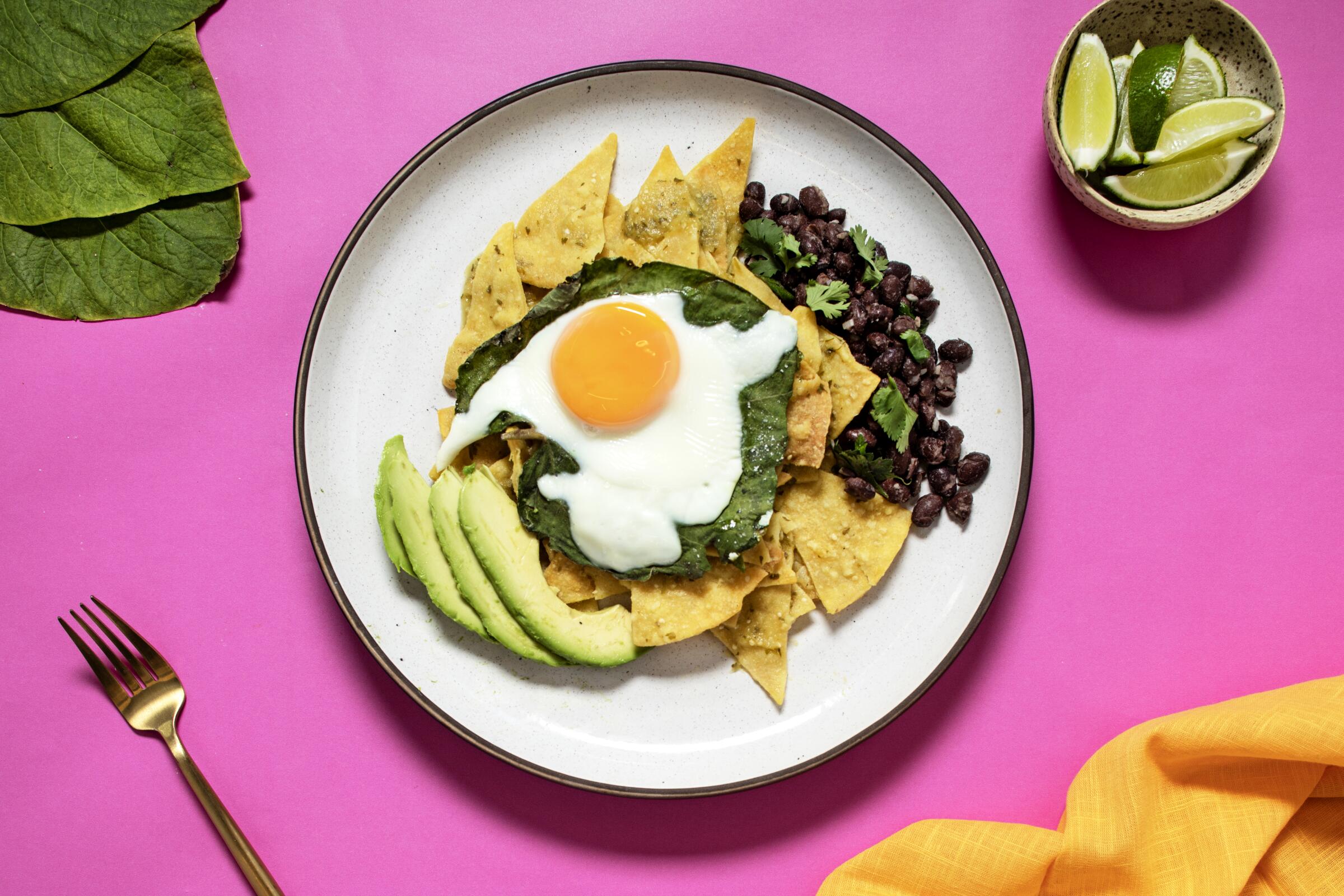
Soft-chewy-crunchy chilaquiles are the Mexican breakfast you eat from a street food vendor out of a van in Mexico City on your way to work, on your birthday at a fancy restaurant or “divorciados” (half verdes, half rojos) the day after you get married, like I did, flying in the face of any superstitions.
At their most basic, chilaquiles are fried tortilla chips briefly cooked in salsa. They’re universal, served as street food or at fine-dining restaurants. Tortilla chips cooked like a guisado until soft and stuffed inside a bolillo for a torta de chilaquil — that’s one of the signature breakfast tortas of Mexico City. I’ve had them with smoked tuna at Flor de la Calabaza restaurant in Ensenada. There are so many examples of chilaquiles, such as with cochinita pibil or tasajo (salted beef) or fried eggs. These can be breakfast, lunch, dinner or a snack.
Food editor Daniel Hernandez shares everything to put on your bucket list when traveling to the capital of Mexico.
Inspired by my hometown of Puerto Vallarta, chilaquiles rojos with Vallarta-style shrimp salad makes for ceviche-meets-brunch, if you want to pretend you’re at the beach. Combining alfalfa sprouts with shrimp is what you find in our classic shrimp burgers, sold at puestos (streetside food stands) and restaurants. My favorite burger is the hamburguesa de camarón at Mr. Burguer in the Palmar de Aramara neighborhood. It’s whole, plump shrimp with melted cheese, grilled bell peppers, onions and handfuls of alfalfa sprouts. (Even in school, we ate bowls of alfalfa sprouts as a snack.)
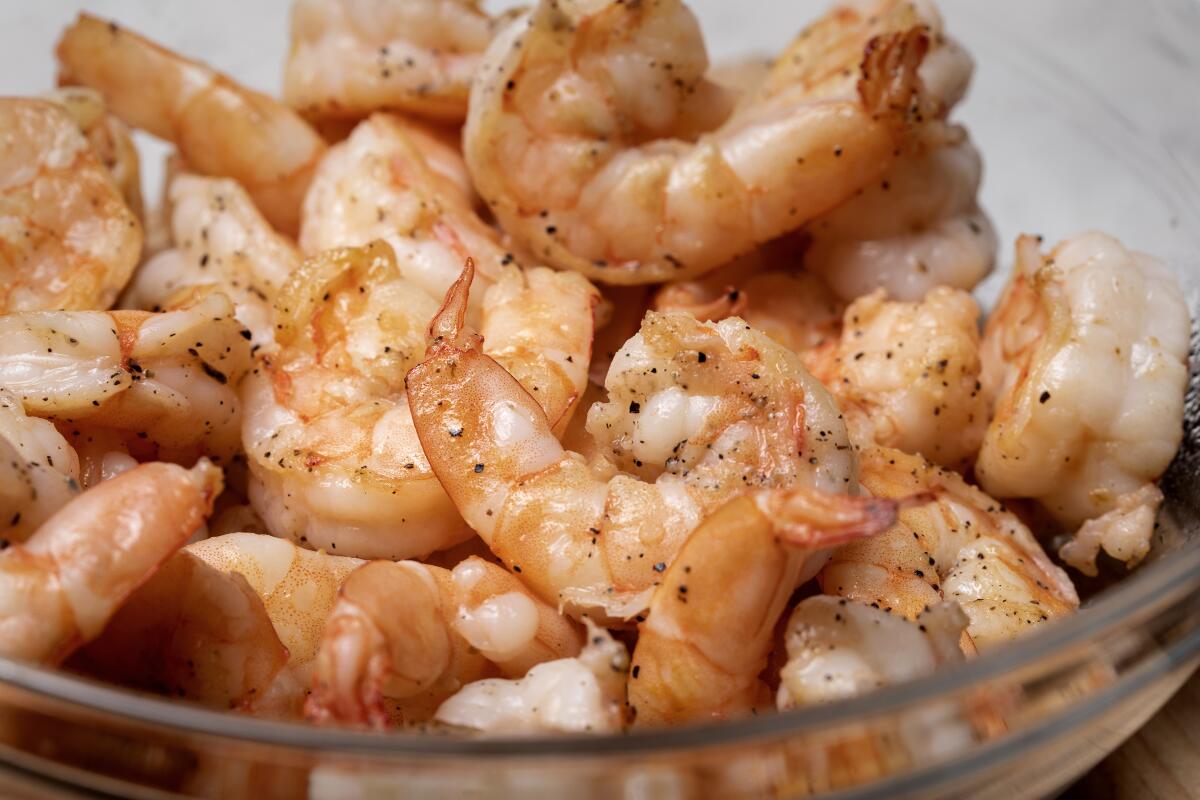

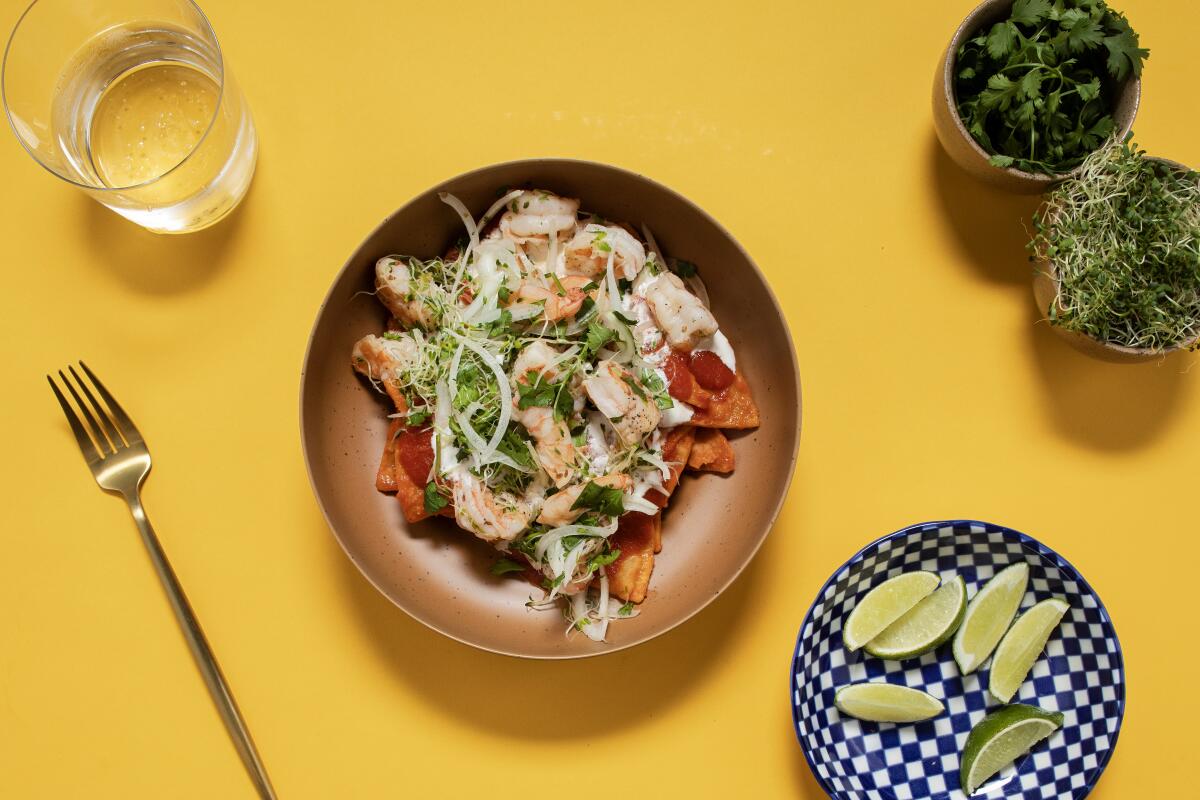
For chilaquiles rojos, I toss sprouts with cilantro and shrimp spiked with lime juice. The simple yet flavorful homemade salsa roja comes together quickly with fruity guajillo chiles that thicken the salsa with a subtle heat closer to smoked paprika than fiery chiles.
To make the best version of chilaquiles, it’s all about the foundation: homemade totopos. Totopos are the official name of tortilla chips in Mexico, and it’s easy to make your own from thick-cut stale tortillas. For totopos that soak up salsa and runny egg yolks without getting soggy, laying out stale tortillas at room temperature overnight is the key to drawing out moisture for maximum crunch factor. If you’re in a rush, you can zap them in the microwave for 30 to 60 seconds to remove moisture before cooking them (they can be fried or baked).
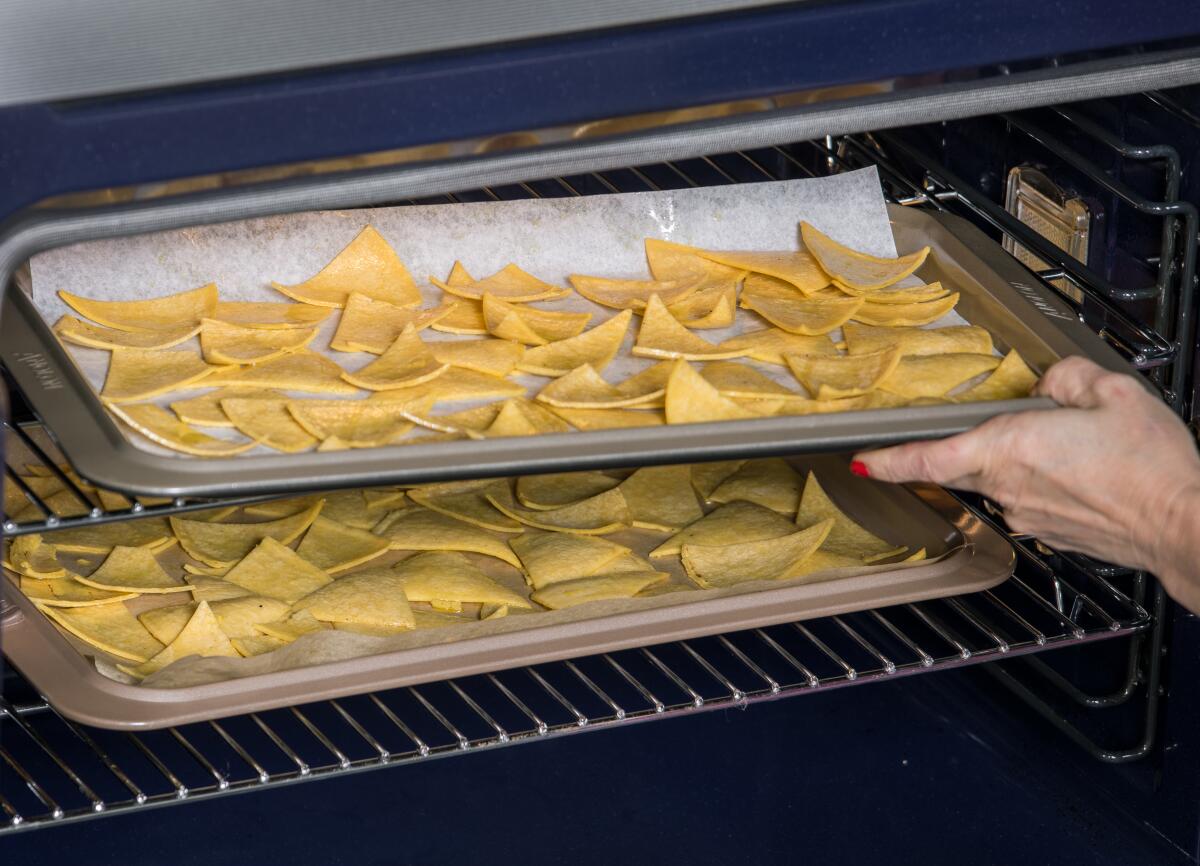
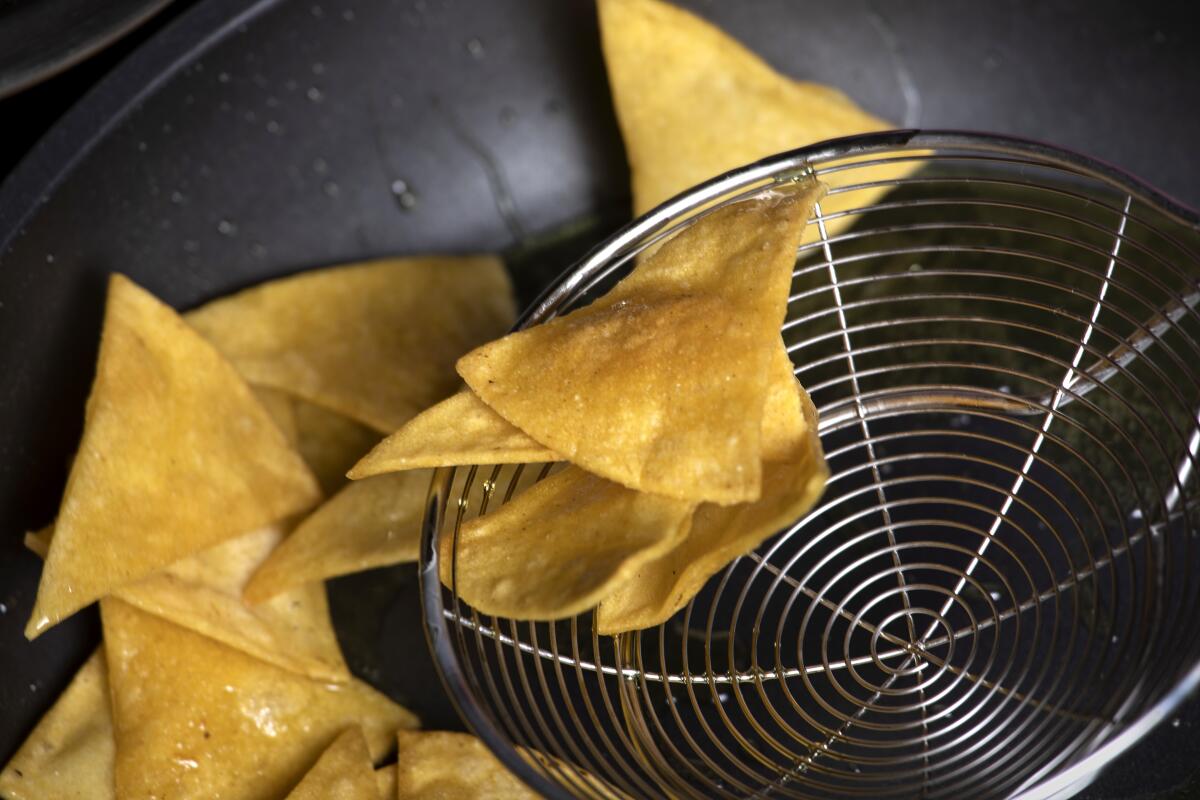
For rushed mornings when you’re craving chilaquiles, reach for store-bought totopos. Look for sturdy, thick totopos versus puffy, thin ones. Somos makes “unusually thick and crunchy” totopos that stand up to salsa beautifully. Have a Chip from Laguna Beach makes flaky totopos seasoned with just a tad of soy sauce. Siete Foods makes white and blue nixtamalized corn totopos with avocado oil that are delicious. When using store-bought totopos for chilaquiles, warm them up in the skillet before adding the salsa. This will release some of the oil from the totopos and bring them back to crunchy status.
For an herbal take: chilaquiles verdes with hoja santa eggs and garlicky beans with parsley, if you just need something green to start your day. Hoja santa (holy leaf), or Piper auritum, is the aromatic vine that grows wild all over Historic South-Central or anywhere in OaxaCalifornia. Oaxaqueños grow the herb essential to their cuisine. Just some of the aromatics loud and present in hoja santa are: tarragon, licorice, fennel and anise.
Mariscos meet the broader flavors of Los Angeles at Loreto, the new Frogtown restaurant from the group behind splashy Cha Cha Chá
You can source it at Mexican grocery stores such as Northgate Gonzalez Markets in small bundles in the produce section, so no foraging is necessary. In this rendition, the hoja santa eggs are layered against the salsa verde — made with cooked tomatillos, garlic, onions and serrano chile — for a tart and herbaceous bite. If you can’t find hoja santa, fresh shiso leaves, available in most Asian markets, make a surprisingly good substitution.
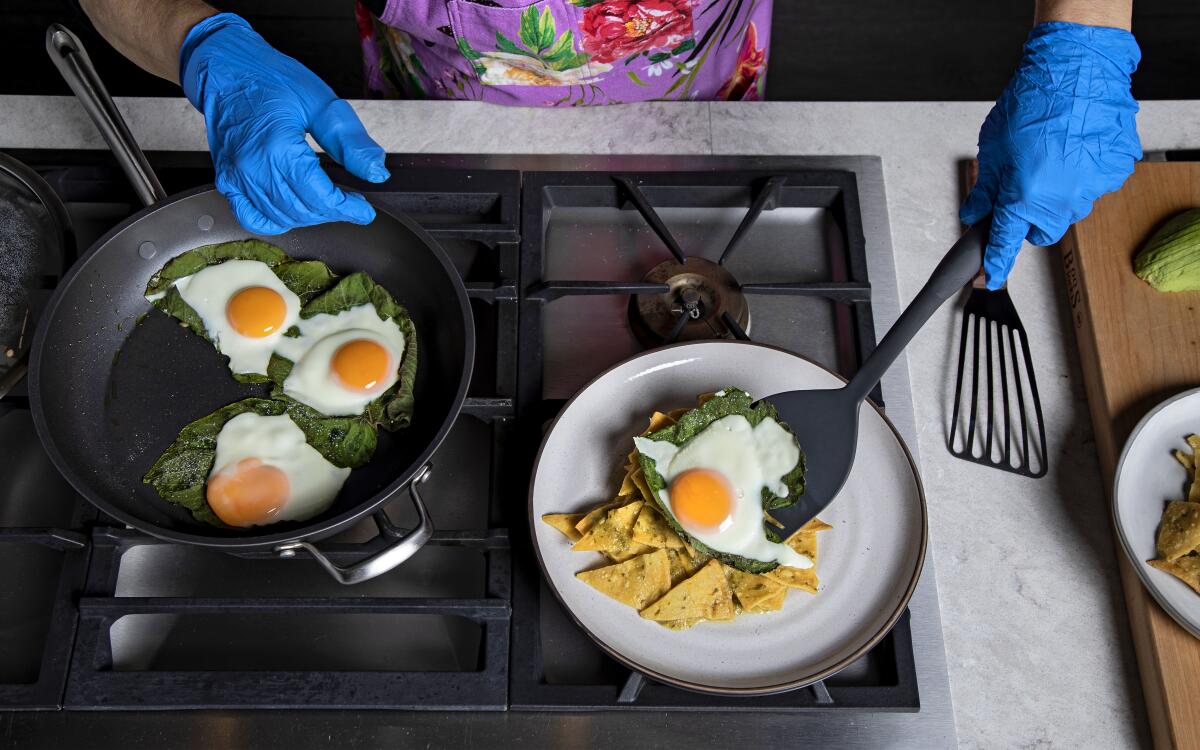
The eggs are gently cooked over whole hoja santa leaves, inspired by Thalía Barrios García, the chef and owner of La Cocina de Humo in Oaxaca City. She isn’t the only one who makes huevos al comal over hoja santa leaves, but hers are the most memorable. As soon as you walk into La Cocina de Humo, that’s the first thing you see — the comal with all the eggs layered with hoja santa. She makes tortillas by hand and puts them on the comal next to the eggs, so they’re chewy, soft and crispy on some sides. Barrios García puts them in a bowl with salsa and then tops them with the eggs — chilaquiles delicious enough to make you want to fly to Oaxaca just to eat them. But also simple enough that you can make them yourself.
Eat your way across L.A.
Get our weekly Tasting Notes newsletter for reviews, news and more.
You may occasionally receive promotional content from the Los Angeles Times.